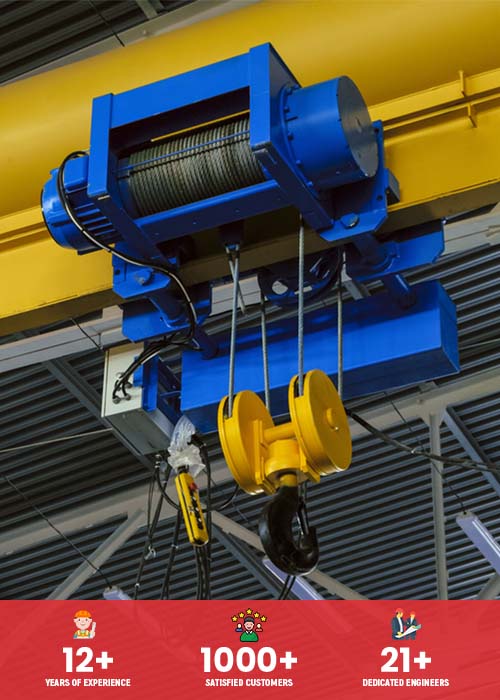Gantry Cranes Operational Safety Guidelines in India
The future of industries has been altered by modern machines. It completes the task accurately and with less human error than a human would. The best illustration of contemporary heavy machinery is a portable gantry crane made by gantry crane manufacturers in India, which can lift and transport massive goods from one location to another using a haul-up mechanism. It is most frequently used to raise car engines, transport large containers at dockyards, and operate several factories and businesses.
Gantry cranes have numerous advantages for organisations, but they may also be quite dangerous if they are not properly maintained, as many accidents and injuries are reported every year as a result. These occurrences also take place as a result of the crane manufacturing sectors not adhering to international standards. The safety regulations that you must adhere to when utilising a portable gantry crane have been discussed in this article to assist you prevent accidents in your line of work.
Importance of following safety guidelines for operating Gantry Cranes
You can operate the gantry crane efficiently and prevent accidents by following safety regulations and operating manuals. You can save both your own life and the life of a coworker thanks to safety regulations. If you want to acquire a portable gantry crane, you should check to see if the manufacturer complies with ANSI and OSHA requirements. This is because if you have to manufacture gantry cranes, you must do so in accordance with OSHA regulations.
The lifting machine instructions can help you operate the crane more effectively and learn more about the gantry crane machine, while safety regulations can help you prevent minor errors and protect you and your coworkers from mishaps. The most frequent causes of accidents are inexperienced and unprofessional operators, objects falling from cranes, overloading, electric hazards, and negligent maintenance.
Safety Standard To Follow While Operating Portable Gantry Cranes
You must abide by the safety regulations listed below if you use portable gantry cranes in your line of work. Doing so will help you prevent accidents from occurring.
- Verify the hoist or gantry crane. It must not be marked as broken or unusable.
- Examine the wire rope of the gantry crane for any tearing or damage.
- Verify the gantry cranes’ safety labels.
- Never go underneath a gantry crane that is loaded.
- Set up alarms all around the crane’s area of operation.
- Steer clear of abrupt acceleration and deceleration.
- When the weight is suspended, try to avoid jerking the gantry crane hoist excessively.
- Regularly schedule periodic checks for every quarter or half-year.
- Any combustible liquid should be removed from the neighbouring crane.
- Never fill the crane with more weight than it can support.
- The crane may only be operated by qualified persons.
- In the vicinity of the crane and its runway, look out for tripping hazards and liquid leaks.
Do’s and Don’ts of Gantry Crane operation
Do’s
- Testing your gantry’s condition before using it is always a good idea. Inadequate brakes or malfunctioning parking jacks, the accumulation of trash on the runway, broken welds, and loosened fasteners are a few examples of warning signs you might look out for.
- In order to prevent tipping, make sure the ground is level.
- Make sure the load that has to be hoisted is directly beneath the gantry.
- Before beginning the lifting procedure, make sure the wheel locks and brakes are securely locked.
Don’ts
- Moving a loaded gantry is prohibited.
- Keep the burden from swinging.
- Never ever use a vehicle to pull a gantry.
- Avoid going underneath a loaded gantry.
- Keep all other objects away from the gantry.



